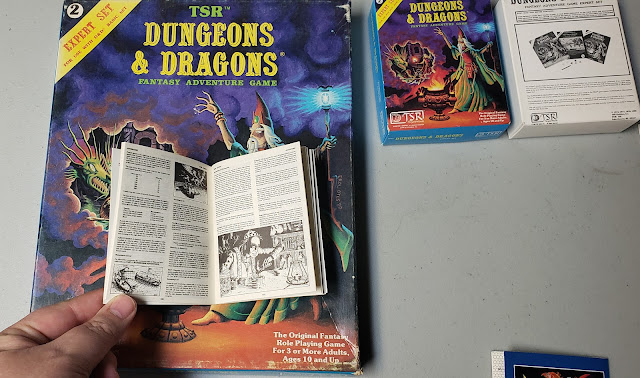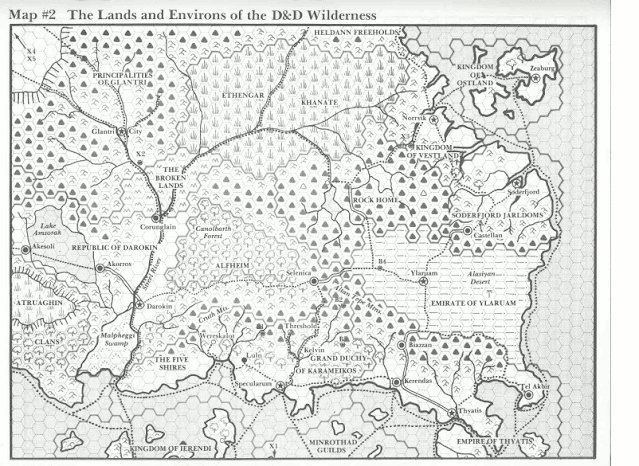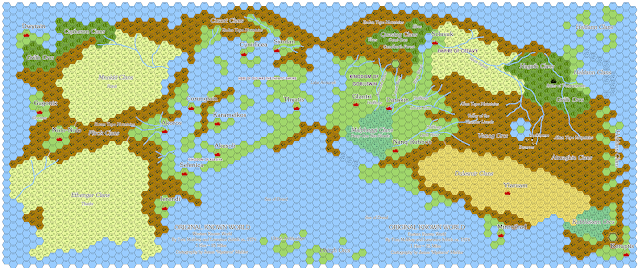Arguably one of the biggest success stories of the late OSR movement has been the publication of
Old-School Essentials Classic Fantasy (2019) and
Old-School Essentials Advanced Fantasy (2021). Indeed I feel that OSE has
supplanted Swords & Wizardry, the darling of the middle OSR movement as the old-school game of choice. It is the old-school game of choice here in my home game, alternating between it and D&D 5e, and seems to be the most talked-about game in the old-school discussion areas.
This is all with good reason. OSE is well designed, superbly organized, and has wonderful art. There is a minimalist approach to the rules and presentation that does not detract from the experience, instead, it rather enhances it. You can see my enthusiasm in my review of the Old-School Essentials Classic Fantasy Boxed set back in 2020. So imagine my surprise when I learned I had not given OSE Advanced a proper review yet.
I have detailed my introduction to D&D many times here. But briefly, my "first" D&D was a poorly copied version of Holmes Basic with an AD&D Monster Manual. My first "true" D&D, the one I could properly call my own was Moldvay Basic/Cook & MArsh Expert (commonly referred to as "B/X"). I would over the course of a year or so add in elements of AD&D. Most importantly the Deities & Demigods, the Fiend Folio, and a copy of Eldritch Wizardry. *My* D&D was always a mish-mash of Basic D&D and AD&D. I later discovered that my playstyle was not at all unique.
Old School Essentials Advanced Fantasy Edition really strikes at the heart of what this sort of play was like. The familiar and easy Basic/Expert rules with AD&D layered on top. Layered is the right word, AD&D had a lot of situational rules and rules used in tournaments and rules designed to cover what looked like medieval realism. As real that is in a world where half-elves fought dragons with magic. OSE-AF strips this down back to the B/X style rules found in OSE-CF and then adds in what people used the most from AD&D. No weapon speed factors, no tournament scoring, just D&D-style play.
OSE-AF is divided into two books, the Player's Tome and the Referee's Tome.
For this review, I am considering the hardcover books I got via the Kickstarter, the PDFs from DriveThruRPG, and extra copies of the Player's Tome I picked up at my FLGS. All books were purchased by me and none were submitted for review purposes.
OSE-AF Player's TomeHardcover. Black and White and color interior art and covers. 248 pages. Bookmarked PDF with hyperlinked table of contents and index. $40.00 for the hardcover print (retail). $15.00 for the PDF.
The Player's Tome covers everything an OSE-AF player needs to know. The book details a lot of the same rules that are found in the OSE-Classic Fantasy (or read: Basic) rules. This new book though integrates the "Basic" and "Advanced" material together with some notes on the "Advanced Fantasy" sections. One might be tempted to say that this book is not needed if you have the OSE-CF book, but that is not really the case. While there are certainly more classes, and more monsters in the case of the Referee Tome, there is still quite a lot of new material here. Enough to make AF twice as large content-wise as CF.
The main feature of this book, and indeed all of the OSE line, is the layout. All material is laid out so that everything you need to read is on facing pages. So a character class always takes up two pages (even and odd) so that when laid flat everything can be read at once and easily. There are very few exceptions to this rule and it gives OSE it's unique look and feel. Add in the art, sparingly but effectively used, the feel is elegant, if minimalist, efficiency. This is the same design that made D&D 4e a joy to read. The same feeling is here.
Advanced Fantasy follows its Advanced namesake and splits character race and character class into two separate things. Basic combined race and class so you got Clerics (always human) and Dwarves (always fighters). Here is the option that most folks want in the "Advanced" game. In addition to the four classes and the four races of Basic, this book introduces six more races and nine more classes.
In the OSE-AF book, we get: Acrobat, Assassin, Barbarian, Bard, Cleric, Druid, Fighter, Illusionist, Knight, Magic-user, Paladin, Ranger, and Thief.
There are also the "race as class" variants of: Drow, Duergar, Dwarf, Elf, Gnome, Half-elf, Halfling, Half-orc, Human, and Svirfneblin. The level maximum is 14 for humans and variable for others. All race/class combinations are detailed. This covers our first 80 some odd pages.
What follows next are guides for character advancement, equipment, animals of burden, transportation, and crews.
The next biggest section is Magic and this covers all the spells for the magic-using classes. Since the max level for any human is 14, spells are limited. Divine spellcasters are limited to the 5th level of casting and Arcane to the 6th level. The advantage here is the clerics and druids are on more equal footing with each other and so are magic-users and illusionists. Unlike their Advanced namesake, this book does not require spell components nor are their other details given. The spells are firmly in the Basic format.
The book wraps up with Adventuring, Hirelings, and building strongholds.
The feel is solid B/X Basic with enough "Advanced" added in to make it feel just a little different. Or in other words, exactly how we used to play it from 1980 to 1983.
OSE-AF Referee's TomeHardcover. Black and White and color interior art and covers. 248 pages. Bookmarked PDF with hyperlinked table of contents and index. $40.00 for the hardcover print (retail). $15.00 for the PDF.
This book covers how to run an OSE-AF game. Some of the details here are the same as OSE-CF but there are enough rules additions and clarification to make it worthwhile to anyone that has OSE-CF.
The first part covers running the game and adventures along with designing a dungeon and wilderness areas.
The next section, Monsters, makes up the bulk of the book. All the old OSE-CF favorites are here and most of the Advanced era monsters. In 107 or so pages we get over 320 monsters. Again the art is light, but it is there. We do not get any Demons or Devils, those are coming in a future book from my understanding, but it is still plenty.
The next largest section is Treasure which includes intelligent swords.
We also get sections on monster tables by terrain, strongholds, and NPCs.
The main feature of this book, and indeed all of the OSE line, is the layout. All material is laid out so that everything you need to read is on facing pages. This is less obvious here as in the Player's Tome, but it is still a solid feature.
The two-volume set might just be the ultimate in expression of the time period in which I was doing my earliest D&D play. There are other Basic/Advanced hybrid games out there and they all provide a good mix of their sources, but it is OSE-AF that is the closest to what I was playing then. All of the fun of Basic with the options in Advanced I loved. The modularity of OSE also allows for expansion. While the 1 to 14 level range covers most of what people will play there is no reason why there can't be an OSE-Companion to cover higher levels.
OSE-AF Carcass Crawler #1PDF only, 32 pages. Color covers, black & white interior art. $7.50 PDF.
The sometimes zine for OSE and named for the OGC version of the infamous carrion crawler.
This issue adds the new races to the Advanced Fantasy line, the gargantuan (like Goliaths), the goblin, and the hephaestan (logical, elf-like beings). I am particularly happy with the Goblin.
New classes for Classic and Advanced fantasy are the acolyte (a type of spell-less cleric with healing), the gargantuan (race-class), the goblin (race-class), the hephaestan (race-class), the kineticist (psychics), and the mage (a spell-less magic-user with magical abilities).
There are new rules for fighters and thieves as well as black powder guns. I like the fighter talents, help give it a bit more to do really. They are at every 5 levels, but I might make them every 4 instead.
OSE-AF Fantasy Reference BookletPDF only, 32 pages. Color covers, black & white interior art. $4.00 PDF.
This handy guide covers all the major tables found in the OSE Advanced Fantasy line. For $4 it is a great little reference.
Through out all these books and the entire OSE line the art is both evocative of the old-school style and still modern enough to please new audiences.
This is the game of choice for me to introduce old-school style play to players of modern games. My regular 5e group took to it like ducks to water. They love it. They still love their 5e games, but they also like to do this one. None of them had ever played B/X prior to this and it was a huge success.
I know that Gavin Norman and Necrotic Gnome have more material to give us for this, I hope it all lives up this new gold standard I set my OSR book to.









































